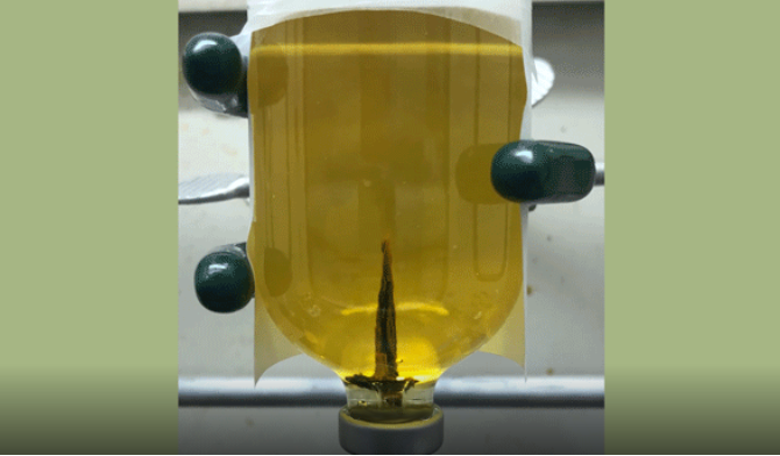Somewhere on Earth a very, very long time ago the right conditions prevailed for life to start evolving beyond a string of molecules into something much more complex. Many scientists think that hydrothermal vents on the seafloor are one such place this could happen. But did these underwater fissures, which never see the light of day, really have the right mix of ingredients to kick-start life, on our planet at least? After recreating an environment similar to that of Earth’s primordial ocean in the lab, scientists say yes, it is possible for the right building blocks of life to get a head start around these chimney-like habitats.
Despite a lifetime being enshrouded in darkness and under the crushing depths of the ocean, hydrothermal vents in Earth’s current epoch flourish with a wide-variety of life. Instead of using the Sun's energy in order to thrive (a process called photosynthesis), ecosystems anchored to geysers on the sea floor derive their energy from chemicals (chemosynthesis) which are pumped out along with geothermally heated water from the vents.
However the conditions in todays oceans are a lot different than 4 billion years ago, so did life really start there, or did it just gravitate towards these vents because of the warmth they offered?
Building on nine years of work and hoping to understand the processes involving the possible emergence of life around hydrothermal vents is a team of scientists at NASA’s Jet Propulsion Laboratory in Pasadena, California who have built their own small-scale seafloors by filling beakers with mixtures commonly found in early Earth's ocean.
One of the fundamental ingredients of life as we know it are amino acids; a simple organic compound containing carbon, hydrogen, oxygen, and nitrogen, that build on one another to form proteins. To start the building process though, amino acids also need ammonia and pyruvate. Pyruvate is a very versatile biological molecule that is critical in cellular respiration and is needed in no fewer than six metabolic pathways including the synthesis of lipids and fatty acids.
After developing the right mix of constituents, including the addition of ‘green rust’ or to use its formal name, iron hydroxide, which was abundant on early Earth, the team tested their hypothesis by heating the solution to the same temperature found near a hydrothermal vent (70 degrees Celsius/158 degrees Fahrenheit) and adjusted the pH to mimic the alkaline environment.
And to account for primitive Earth conditions, the team also removed the oxygen from the mixture because, unlike today, our planet had very little oxygen in its ocean 4 billion years ago.
"Understanding how far you can go with just organics and minerals before you have an actual cell is really important for understanding what types of environments life could emerge from," said Laurie Barge, the lead investigator and the first author of the new recently published study.
Even with just a paltry amount of oxygen, it was enough for the green rust to react with in order to produce the amino acid alanine and the alpha hydroxy acid lactate. These latter acids are byproducts of amino acid reactions, however some scientists theorise they too could bond to form more complex organic molecules that could lead to life.
"We've shown that in geological conditions similar to early Earth, and maybe to other planets, we can form amino acids and alpha hydroxy acids from a simple reaction under mild conditions that would have existed on the seafloor," said Barge.
If such a “basic” recipe can drive an organic reaction in environments akin to those of a hydrothermal vent on Earth, perhaps it is already underway elsewhere in the cosmos such as on Jupiter's moon Europa and Saturn's moon Enceladus for example; both of which are suspected of having large liquid salt-water oceans beneath their frozen surfaces that are in contact with their seafloor.
Not only that but Cassini has already revealed that jets of icy particles which shoot out at about 800 miles per hour (400 meters per second) from the oceans on Enceladus are laced with a brew of water and simple organic chemicals. A recipe that bodes well for the possibility of a habitable ocean world.
"We don't have concrete evidence of life elsewhere yet," said Barge. "But understanding the conditions that are required for life's origin can help narrow down the places that we think life could exist."
The superheated black water pouring from the vent provides high-energy chemicals that sustain the tubeworms (bottom photo) and other organisms that thrive in this unlikely habitat.











